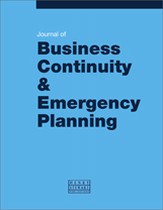Estimating earthquake-induced failure probability and downtime of critical facilities
Abstract
Fault trees have long been used to estimate failure risk in earthquakes, especially for nuclear power plants (NPPs). One interesting application is that one can assess and manage the probability that two facilities — a primary and backup — would be simultaneously rendered inoperative in a single earthquake. Another is that one can calculate the probabilistic time required to restore a facility to functionality, and the probability that, during any given planning period, the facility would be rendered inoperative for any specified duration. A large new peer-reviewed library of component damageability and repair-time data for the first time enables fault trees to be used to calculate the seismic risk of operational failure and downtime for a wide variety of buildings other than NPPs. With the new library, seismic risk of both the failure probability and probabilistic downtime can be assessed and managed, considering the facility’s unique combination of structural and non-structural components, their seismic installation conditions, and the other systems on which the facility relies. An example is offered of real computer data centres operated by a California utility. The fault trees were created and tested in collaboration with utility operators, and the failure probability and downtime results validated in several ways.
The full article is available to subscribers to the journal.
Citation
Porter, Keith and Ramer, Kyle (2012, March 1). Estimating earthquake-induced failure probability and downtime of critical facilities. In the Journal of Business Continuity & Emergency Planning, Volume 5, Issue 4. https://doi.org/10.69554/UNUE6649.Publications LLP
